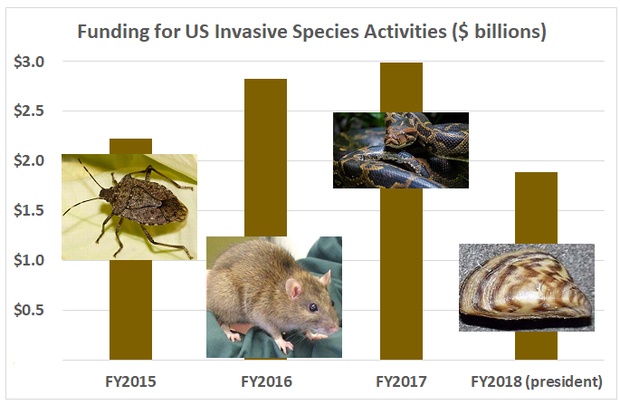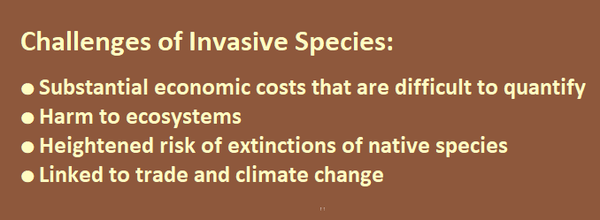US Ends Two Science Advisory Boards: Hill
US Ends Two Science Advisory Boards: Hill
Read the article from the Hill about the end to US advisory panels on marine protection and invasive species.
Miranda Green is a reporter for the Hill.
The Congressional Research Service reviews costs of programs on invasive species:
“An invasive species is a nonnative (also known as an alien) species that does or is likely to cause economic or environmental harm or harm to human health. The human-mediated spread of species has occurred throughout history. However, as society has become more globalized, opportunities for the spread of nonnative and invasive species have increased (e.g., trade shipments can carry species and introduce them to many different regions of the world)…. Invasive species include terrestrial and aquatic plants, animals, and microbes.”

Changing budget: FY2018 represents President Trump’s proposed budget (Source: Congressional Research Service and the National Invasive Species Council)

(Source: Economics of Invasive Species, Mark Eiswerth, Chad Lawley and Michael H. Taylor, Environmental Economics , 2018)